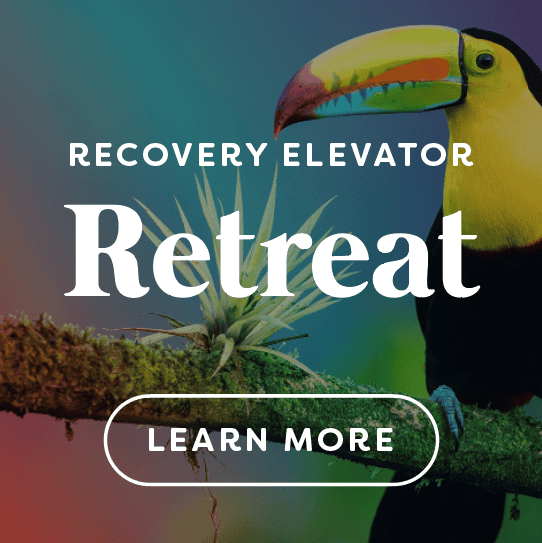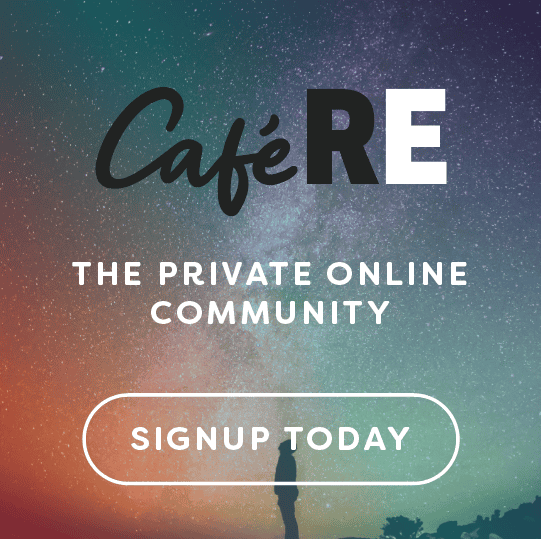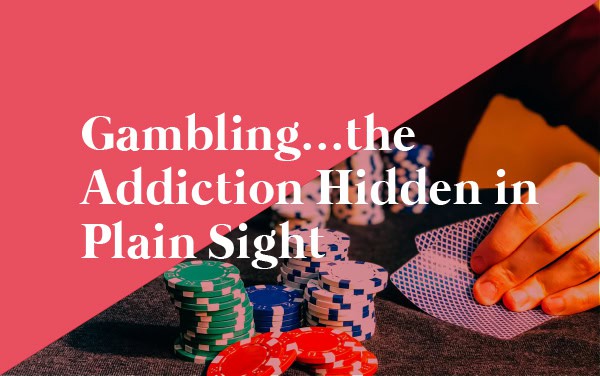
by RE Helper | Oct 15, 2024 | Blog, Gambling, Helpful Tips, Resources
Today’s blog entry is from Bobbie Malatesta. Bobbie has been a member of Café RE since February 2020.
Gambling…the Addiction Hidden in Plain Sight
By: Bobbie Malatesta (Café RE UP)
If you’ve met me in the community or heard me share, you probably know this about me. My first drug of choice was gambling addiction. My sobriety followed 999 days later, sort of by accident. When I was preparing to go to Asia with our Recovery Elevator family, I was following the request to have 30 days without alcohol before going to an RE event. For the sake of today’s conversation, the rest is history.
I probably should have ditched the booze when I went to rehab in 2017 for gambling, but I wasn’t ready at the time. A few people actually asked if I was going to treatment for the alcohol or the gambling problem. It wasn’t time for me to quit drinking then, but I am happy to report that I attribute some of the skills I acquired through that journey to helping me stay sober today.
This scenario of being both a problem gambler and drinker simultaneously isn’t unique to me. That’s what prompted me to write this. Although drinking is a substance and gambling is a behavior, they share one important thing in common…they’re both normalized in the world we live in.
Legalized online gambling is in more states now than it isn’t. During that Asia trip, I unknowingly walked into a casino because they directed us there to use the restrooms. At an Recovery Elevator Atlanta meetup, the gas station had five slot machines. While driving through Montana to get to the Recovery Elevator Bozeman Retreat, I saw mini casinos at many of the gas stations along the way.
In every convenience store and grocery store, we can get powerball or scratcher tickets. At work, you can gamble on brackets or join in lottery pools, at fundraisers you can participate in raffles and the list goes on.
Gambling is deeply ingrained in our society, and the problem keeps worsening. I believe I gambled for the same reasons I drank, to numb and escape. Not every person who has or had a challenging relationship with alcohol will have one with gambling, but it is important to shine the light on the possibility.
My intention for sharing my thoughts on this was let you know a couple key points.
- Gambling is everywhere and it can be dangerous
- There are resources and help out there- Facebook communities, podcasts, national and state agencies and so much more.
- We are probably a bit higher risk than those who don’t have addictive behaviors on their resume
- It’s not about the money
It is my mission to raise awareness around problem gambling and if you ever have any questions, please feel free to contact me. 203-565-5646
One of my favorite premises that Paul shares is the concept of identifying the problem. He says in relation to alcohol, that if we are asking ourselves if we might have a problem, then we might have a problem. The people who don’t have the issue, usually aren’t questioning themselves.
I truly appreciate Recovery Elevator for the opportunity to share this message!
With Love and Gratitude,
Bobbie
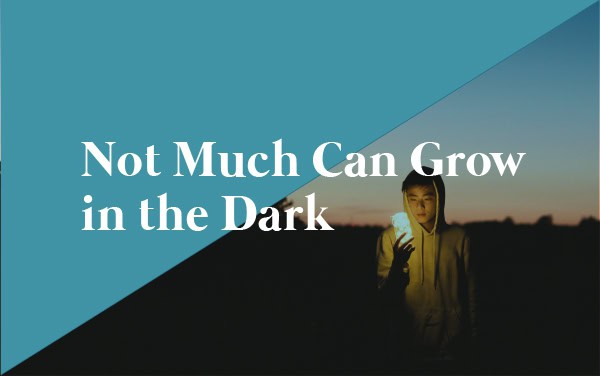
by RE Helper | Jul 15, 2024 | Alcohol Free, Blog, Early Sobriety, Helpful Tips, Uncategorized
Today’s blog entry is from Kristie K. Kristie has been a member of Café RE since December 31, 2019. She can be found supporting her fellow Café RE GO members and hosting our Café RE chats.
Not Much Can Grow in the Dark
By: Kristie K. (Café RE GO)
1.12.24
During these Winter months night time darkness cuts the daylight dramatically. The short days are gray and cold. Darkness when I wake. Darkness when I sleep. I can not change these things of nature but I can change myself and my perspective. I knew the darkness of nature was coming, so I mentally prepared and took action in writing this.
When I was drinking, many of my days were dark. My world was dark. My soul was dark.
There was not much to look forward to other than the next drink. It was a cycle of wanting and needing the next drink. I drank the dark. The world was heavy and dark as I attempted to do everything for the good of the family, community or students. My life was a daily grind filled with to dos, lists and tasks. Always in a rush, I gave of myself, my time and my energy. No self. Instead of breathing, I was drinking. I rarely took a moment to breathe. I neglected myself, forgot who I was and slowly I began to die within. The darkness grew.
Funny thing about the darkness of addiction, it only let me see what it wanted me to see and not my true reality.
My perception was framed by an addiction black bubble that protected itself and forced me to keep it alive. As the addiction grew, so did the black bubble. It darkened and blacked out people, activities, opportunities and the joy from my life. At the center of this bubble was loneliness, anxiety, depression, self loathing and an empty bottle. Others did not see this because I was busy pleasing them. I was helping, offering, volunteering, coaching, fundraising and performing as your classic high functioning addict…another darkness strategy.
Now, I spend every morning with myself.
I write, read and reflect. I spend about 30 minutes alone in the morning with myself and myself only. My daily intention is to connect with the light. The light that is constant, warm and wraps me in love. This connection grounds me in values, principles and love. This connection helps me see how life is working for me and I have much to be grateful. This light reminds me that I have light within me through strengths, skills and talents. I can use these to create more love, kindness and goodness into the world. The light is constant, warm and bright.
With this daily practice, I was and still able to face the darkness. I was able to face my addiction through this daily practice by finally taking action after many years of denial. I started to listen to podcasts and read about alcohol. After about a year of journaling, I joined Cafe RE and attended my first AA meeting.
Darkness is part of life. Darkness is natural and will continue to be a part of life. Addiction showed me darkness and provided me light, love, friends, peace and a return to self. Mother Nature provides me darkness, to retreat and rest so I can renew within. I accept and respect the darkness. Not much can grow in the dark…so I chose to seek the light. Will you join me?
Surise on ?
Kristie
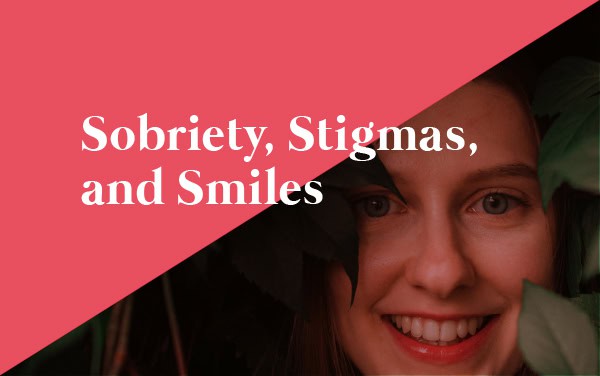
by RE Helper | Jun 15, 2024 | Alcohol Free, Blog, Early Sobriety, Helpful Tips, Uncategorized
Today’s blog entry is from Justine. Justine has been a member of Café RE since November 2023. She can be found supporting her fellow Café RE UP members and on the Café RE chats.
Sobriety, Stigmas and Smiles
By: Justine (Café RE UP)
As I sit here today, I am 2 years and 11 months sober. A few months ago, I decided to tackle the daunting task of beginning to date again. As if dating in your thirties isn’t hard enough, I am one of the chosen ones who must add “alcoholic” to my resume. I know some people choose not to embrace that label. When I first started my sober journey, I wouldn’t be caught dead calling myself an alcoholic.
But where I stand today, I say it purposefully.
I want anyone I tell that to to know that if they ever see me drinking, there is a serious problem.
Just another way to keep myself accountable.
Anyway, I digress. The point is, when I decided to date, I knew that I would have to share the part of my past I so desire to change, my alcoholism. It is something I bring up in the first conversation. I began seeing someone exclusively for the past five weeks. A few days ago, he let me know that he could no longer do it because it weighed too heavily on his mind to know that if I were to relapse, he could never support me through it. Phew! As an outsider, you’re probably thinking I dodged a bullet. And deep down, I know that I did.
Here is the thing. My first reaction was that of sickness. What a punch to the gut to know that something I have worked so hard to change about myself can STILL stand in the way of my happiness. For the last 1,072 days, I have woken up and made the incredibly difficult choice to remain sober.
If I could go back and re-write my past, I would do it in a heartbeat; But I can’t. My past is the one thing I will never be able to change. This experience served to remind me that the stigma of alcoholism still exists so prevalently in our society. It felt like someone was telling me that I will forever be undeserving of (their) love because I am an alcoholic. That no matter the length of time I have away from the bottle, there will always be someone there to remind me, “But hey, you might relapse.”
I’ve been reflecting a lot on coming up on three years of sustained sobriety. I’ve shared in a few evening groups about how difficult it feels to have achieved so little in what seems like so much time. In the Café RE community chat today, I listened while others reflected on change within sobriety. I changed a lot in the beginning. My appearance, my career, my location. Still, I am not where I want to be. The truth of the matter is, it took me more than a decade to ruin these parts of my life. So, I’m not sure why I have the audacity to think I can rebuild it in just three short years.
Instead of dwelling on what I don’t yet have, I started to reflect on what I do have.
- I have two sisters who love and support me unconditionally, who understand and are always willing to lend an ear.
- I have my health and the ability to run long distances with relative ease.
- I have perspective on my problems.
- I have coping mechanisms other than alcohol to deal with those problems.
- I have the ability to be present in the moment and a proper role model for my nieces.
- I have two fur babies who provide me with the most comfort I have ever felt.
- I have a job that pays me.
- I have a roof over my head, food to eat, clothes to wear and the ability to order off Amazon a few too many times per month.
I have my personality and most importantly, I have my smile back.
In active addiction, I did not have many of those things I just mentioned. When I write it all out, how foolish it is to think that I haven’t achieved much in sobriety! Here is my reminder to you. If you are struggling with the “why” and want to take the easy way out, write down all the things you might lose again. Despite not yet being completely “fixed”, I would never in a million years wish to go back to my old life. I want to take a second to thank everyone in the Recovery Elevator community for being a part of my journey. At the beginning, I was most definitely a dry drunk.
If I could start over and do one thing differently, it would have been to join a community sooner. What great perspectives I gain every day from every single share. Here’s to many more years of sobriety and smiles.
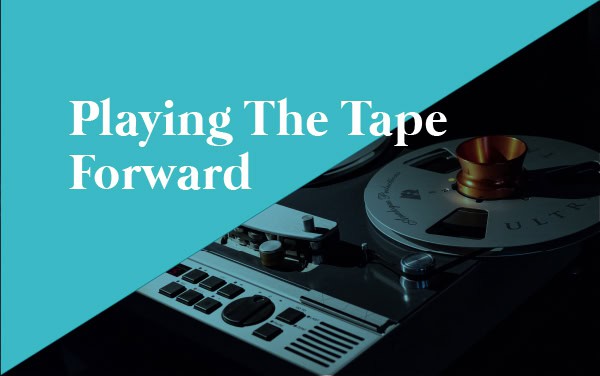
by RE Helper | May 15, 2024 | Alcohol Free, Blog, Early Sobriety, Helpful Tips, Uncategorized
Today’s blog entry is from Johanna C. Johanna has been a member of Café RE since September 2023. Sha has been an active and supportive member of her Café RE Blue group and our Café RE chats!
Playing The Tape Forward: A Foundation For My Sobriety
By: Johanna C. (Café RE Blue)
Through the course of a sobriety journey, we’ve become accustomed to the concept of building a tool kit. Stacking together concepts, ideas, and ways of coping that don’t include alcohol as a way to navigate to a better life and get closer to our true selves.
There are sobriety phrases, some albeit corny or even annoying.
For me, it’s the “grateful alcoholic” identity (ps I am getting comfortable with the word grateful as it relates to my sobriety journey). There may be one (or more) that are uncomfortable or downright piss you off. One concept that I learned from Paul & the Recovery Elevator POD, that still to this day, 3 months in (today, November 18th), on an extended 3+year effort towards an AF life, is playing the tape forward. Episode 356: Play the Tape Forward.
It’s not so much a phrase, but a tool, a strategy.
A mechanism through which we can move through our addiction and keep saying YES to an AF life. Despite our time away from alcohol, there are moments or even extended periods of time when we feel like a life with alcohol isn’t so bad, that we can moderate. The fear of missing out is too great and the loss of that idealistic, glamorized life with a fancy glass of wine, a craft beer or a seductive cocktail with fancy elixirs mixed in, is what we want. It’s what we think we need to be complete.
Or when the stress and sadness are too much, and we want to retreat into our safe space of numbing, alcohol is ready to accept that familiar role. The reality is, that space is not safe. There is no trust. It’s downright dangerous.
And for those of us who have taken a step into the other side, regardless of sobriety time, see it. And the challenge now is to make it stick somehow. So…when we play the tape forward of what that life was like, it’s meant to stop us in our tracks and remember. Remember that all too familiar audio and visual representation of who we are when we’re drinking. The choices I made, the sick feeling I would feel, the events I would miss, the friends I would disappoint, the depression that would consume me – the list goes on.
When we’re in it, we can’t see it.
Of course, we experience and feel the booming headaches, the continuous, all-day nausea, the puffy face, the bloodshot eyes, the inner shame and fuzzy recollections of what occurred the night(s) prior. I’ve come to realize, there is a strong sense of culture that paints that picture as an expected way of life.
That it’s somehow funny to blackout.
Waking up not knowing what you did last night and that when we promise we’ll never drink again, it’s quite fine when we reach for the wine and wine glass the next weekend when happy hour hits. Social media is a breeding ground for insidious shit like that. We feel all of it and it sucks. But in the depths of alcohol and its tendrils that permeate every part of our being, when we’re using, it prevents any of us from seeing the other side. I’ve learned, in many ways, it’s chemically impossible.
What playing the tape forward does is remind me. It grounds me. It calms me, in some way. For some, it terrifies them. It terrified me early on. It felt like there was too much to lose.
Some of us feel like we would let our communities down.
And now, after joining Cafe RE and participating actively for the last 2 months (I’m a newbie), in chats and outreaches to those who’ve lent a hand, I look at it this way: if I decide that drinking is most important now, as these feelings of re-inclusion come over me from time to time, then what does that mean? What do I have to give up? Who am I then?
It means that I will not and cannot live authentically every moment of every day.
That in a blink of a notice, if someone needs me, and I am drunk or drinking, I won’t be fully present. Even though I may want to. It means that at some point, eventually, one glass will turn into bottles. This will lead to paralyzing depression and anxiety, leaving me wondering, “How did I get here.”
When we play the tape forward, we see the life we left. We get the opportunity to choose an alcohol-free life every time. A life of freedom and rid of the toxicity that drives us further and further away from who we really are.
Before I say this, please know that I am in no way suggesting to experiment. The 8 months of “field research” that I engaged in after 1.5 years of sobriety in led me to the familiar line, “how did I get here (again)”. It has taught me that it WILL eventually return to that point. It took some time, but I had reached that point, again, amidst a tragic loss.
Alcohol fades our memories.
It dulls our feelings, loves us to live in gray versus technicolor. It feeds on us living in a depressive state. And that, I know (and we all know) is an indisputable fact. As I write this, I tear up with emotion. Reflecting on this 3+ year journey and the lessons it has allowed me to learn. The space for me to, for the first time in my adult life, truly decide how I want to live. And most importantly why I want to live that way.
I recently took advice from Laura McKowen, from her latest book ‘Push Off From Here.’
She writes about a practice she learned in therapy, a form of written visualization, where you play two different tapes forward (hmm… I thought there was only one…). Laura explains that you are to imagine a scenario where you would anticipate feeling that without alcohol/drinking, it would be incomplete, not fun, boring etc.
Then, with as much detail as possible, write each scenario out one at a time: one where you’re drinking as you would and one where you aren’t. Page 93 in Push Off From Here.
I chose Christmas Eve and Christmas Day. Holy Shit was that wild.
When I was drinking, those two days were ones that I would always regret, year in and year out. My first sober Christmas Eve and Day – a true milestone. A moment I will always include in my preferred tape forward. Through this exercise, I was able to reflect on the tape that illustrates my life as an anxiety-ridden, unpredictable and obsessive drinker. And then one where I am a present, joyful, thankful and gracious person. One who loves spending time with their family during the holidays and cooking delicious meals, despite the stress it sometimes brings on.
Writing it out, playing both tapes forward, as plain as day on paper, did wonderful things. It caused some things to shift. Mostly, it made space for me to be proud of the choice I’ve made to stay alcohol-free today. It reminds me of the gifts it gives me each moment. It empowers me to warrior on, closer to the person I already am.
By Johanna C, 3 months sober (at the time of writing), most recent sober date August 18th, 2023. First ever sober date was June 22, 2020, a date I am proud of as well. I’ve been a member of Cafe RE since September 18th 2023. That day was the day when I decided not to try sobriety alone ?
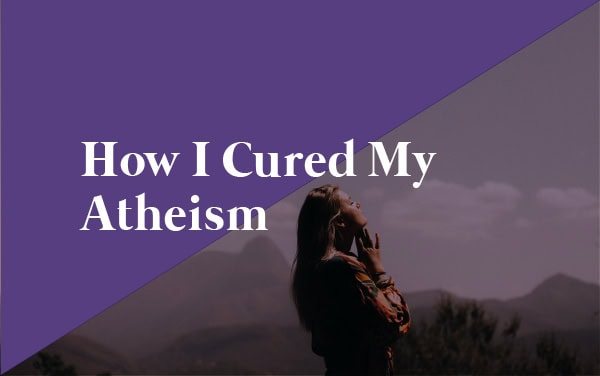
by RE Helper | Jan 15, 2024 | Alcohol Free, Blog, Expectations, Helpful Tips, Resources, Uncategorized
Today’s blog entry is from Bobbie Malatesta. Bobbie has been a member of Café RE since February 2020. Bobbie just celebrated 4 years alcohol free and is a big source of support to her Café RE UP group!
How I Cured My Atheism
By: Bobbie Malatesta (Café RE UP)
Recently, someone shared a beautiful acronym that I wish I had earlier in my spirituality journey. Before I get into that, please allow me to explain a little of my history in this department.
In my family, we had the Italian and Polish grandparents that were traditionally Catholic. My parents didn’t make us be Catholic except for when we went to weddings and funerals of course. I was given the option to choose what religion I wanted to be.
At age 10, I decided to get baptized a Baptist. I was to stand in a sunken tub in the church and get dunked by the clergy and that would be that, right? Well, not exactly. I begged the man baptizing me to hold my nose when he dunked me. Guess what? He didn’t!!
And so began my atheism. How could I trust this God if his person couldn’t even help me with my minor little request? Staying true to my disbelief and anger was easy as my life unfolded. Trauma, tragedy, death after death, abandonment, and all the other bull-oney that life has to offer seemed to start and never stop in my life. How could there possibly be a “”God” if all these bad things kept happening to me?
And so my life went.
Once I joined 12 Step and had to memorize the Serenity Prayer, it got a bit more challenging. Any time my GA crew wanted me to kick off the prayer, they expected me to say that “G” word but I didn’t want to talk to him. I still didn’t believe in him. On account of my big mouth and the fact that one of the principles in the program is that you don’t have to believe in the G word per seh, we found a compromise. Whenever I started the prayer, I addressed the Universe. Eventually, some of my fellows would start with Universe too, in support of me.
Things were going along just great until I got to Step 11. “ Sought through prayer and mediation…. conscious contact with GOD….” Oh Sugar! It was time to revisit this whole God concept for me. Long story short, I started going to church, meditating and doing the work so I could “graduate” Step 11.
One of my favorite parts of doing this “work” was being in recovery communities like Café RE. Working on Recovery Dharma, Sober travel trips with beautiful peers, learning from Patrick and appreciating the landscape of Bozeman all contributed to what is defined as spirituality to me now. I can see God now in the essence of people, sunsets and sunrises and music. The key is it doesn’t have to be labeled as god, universe or any other word in particular.
The end result was that for me, I now believed in a God, and I still choose to call her or him, Universe.
Now, I have embraced and want to share GUS!
GUS was there all along and I heard about him when I was supposed to, recently at a conference.
GUS stands for:
God
Universe
Source/ Spirit
I am believer that there is no one right way for anything, including our own spirituality. This is not meant an insult to anyone’s faith or choices, but to offer a solution to anyone who might be stuck on this premise like I was.
Either way, GUS got us, no matter what you call her/ him/ it.
Thanks for letting me share!
With Love & gratitude,
Bobbie

by RE Helper | Nov 21, 2023 | Blog, Early Sobriety, Helpful Tips, Holidays, Uncategorized
A special holiday bonus blog from one of our Café RE members!
Holiday Survival Guide: Tips and Tricks
By: Adrienne (Café RE GO)
The holidays are coming and everyone is drinking….Sending out an SMS (Save My Sobriety)!!
We’ve all been there. The annual holidays set in and the only non-drinkers are you and the kids!
The question you may be asking yourself is…
How do I stay strong when the holiday vibe is booming and everyone is in party mode celebrating all that we have to be grateful for?”
To reframe this question I would ask…
How do I honor myself and my goals of sobriety in this time of annual appreciation for myself and my loved ones?”
How do I want to celebrate in a way that is relaxing, Fun (Rule 22 here from Café RE), and supports me feeling great in the moment and the following day?
Play the tape forward and then imagine yourself remembering the gathering; how do you want that to look or feel?
What tools will I bring with me to keep me accountable to the life I want to live? (The tools are different for everyone.)
For me, I bring my smartphone so I can stay close to my supports (Café RE peeps). I bring AF drinks (Athletic Brewing Co., Run Wild NA beer is a favorite). I bring an open mind. I’ve even brought my list of my why’s before tucked in a back pocket. And I bring an exit plan. The exit plan is my trap door and it’s a must. This could include me just leaving the party without saying I’m doing so, I may tell someone close to me that I’m out, or I may do the long goodbye; you know the one with all the hugging :).
What do I say if they offer me a drink or ask why I’m not drinking? There are several ways to come at this.
You can bring your own drinks, if it’s an AF beer odds are they won’t even notice that you aren’t actually drinking the poison (I’ve tested this one out). If offered a drink; “sure I’ll have a water”.
If further probing into why you aren’t drinking stick to the facts. You could say your not drinking anymore, you could say you are driving, you could say you aren’t drinking tonight. The secret to this scenario is you are more invested in what’s going on with your path than they are. Most people don’t really want the laundry list of your alcohol history. They want to know, are you in or are you out. Odds are they won’t even care what your ingesting once they are in the haze.
If things get awkward change the subject, use the bathroom to regroup, put your needs first, and if all else fails…trap door my friend.
Buuuuut….What if they think I’m boring?. First, who are they specifically? Is there really a they or is it just your inner dialogue trying to sabotage you with old thought patterns?
Listen….YOU ARE NOT BORING! You are your beautiful, authentic, one and only self! Sober life is anything but boring.
Buuuuut…What if they think I’m judging them or they are bummed I won’t drink with them?
Oh that’s right, the people pleasing!
I know it well friends. If I do the thing they want then they will like me, think I’m cool, and/or want to hang out with me.
Maybe that’s all true, but is it worth compromising your own comfort for theirs?
In the moment this may be uncomfortable but I’m asking you to stay with it. Exposure to our fears/triggers and staying the course is important field work to success. Every time you overcome a situation with your own tools for change and growth you get stronger! Each time you succeed you are gaining experience to draw from that proves that you can navigate life and socialize sober! You learn who is an ally in your life, who to put your energy toward, and who you want to develop relationships with.
On this holiday season my wish for you is that you put your needs first, protect your sobriety, be gentle with yourself, and please listen and honor yourself. I hope you find all the joy that exists with your family and friends
Happy Holidays!







